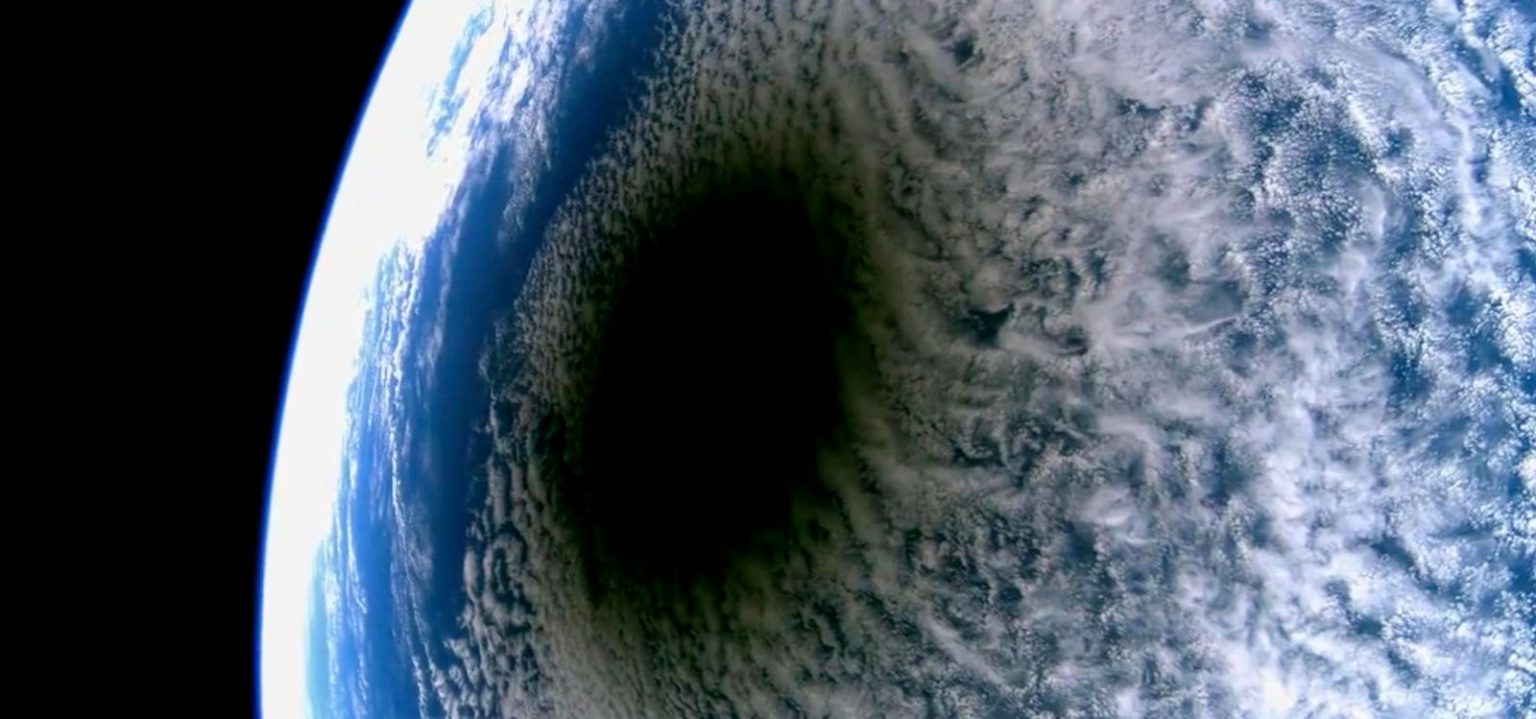On April 8th, a British satellite orbiting Earth captured stunning 4K images of the total solar eclipse, following NASA’s impressive images of the moon’s shadow on Earth from the International Space Station. The satellite, known as ETV-A1 and operated by Sen, showcased multiple views of the moon’s umbra as it traveled 9,200 miles across the Earth’s surface in just over three hours. The path of totality, where the shadow was around 115 miles wide, provided viewers with the unique experience of witnessing darkness in the day and observing the sun’s corona in clear skies.
The ETV-A1 satellite is located in low-Earth orbit, approximately 318 miles above the planet, and takes about 90 minutes to complete one orbit. Launched on January 13, 2022, aboard a SpaceX Falcon 9 rocket, Sen plans to deploy a constellation of satellites starting in 2025. The company’s focus on capturing high-quality space videos includes launching a 4K camera to the ISS on March 21 and preparing to live-stream views of Earth from the space station later this year. The SpaceTV-1 camera will offer three unique 4K views, including a panoramic view of Earth’s horizon, a straight-down view measuring about 240 km x 180 km, and a forward-facing view of a docking port on the ISS.
For those interested in witnessing another total solar eclipse, the next opportunity will be on August 12, 2026, in Europe. This will be mainland Europe’s first total solar eclipse since 1999, with an 83-190-mile-wide moon shadow moving from remote Russian Siberia to Greenland, Iceland, and Spain. Approximately 15 million people live within the path of totality, providing an exciting opportunity to experience this celestial event. Clear skies and wide eyes are wished for all those who plan to witness this awe-inspiring natural phenomenon.
Sen’s satellite, ETV-A1, continues to provide high-quality images and videos of space events, such as the recent total solar eclipse, offering viewers a unique perspective from low-Earth orbit. The company’s innovative approach to capturing and sharing space imagery includes plans for live-streaming views from the ISS, providing a fascinating glimpse into Earth from outer space. By offering multiple perspectives through their 4K cameras, Sen aims to bring the wonders of space closer to audiences around the world, with future plans to expand their satellite constellation and enhance their space exploration capabilities.
As technological advancements in space imaging continue to evolve, companies like Sen play a crucial role in bringing the beauty and wonder of celestial events, such as solar eclipses, to a global audience. With the next total solar eclipse set to occur in Europe in 2026, the anticipation for this rare event is building, and Sen’s satellite imagery promises to provide an unparalleled view of this natural spectacle. Whether observing from Earth or from the vantage point of a satellite in low-Earth orbit, the opportunity to witness such celestial events offers a unique and awe-inspiring experience for all who are able to view them.













